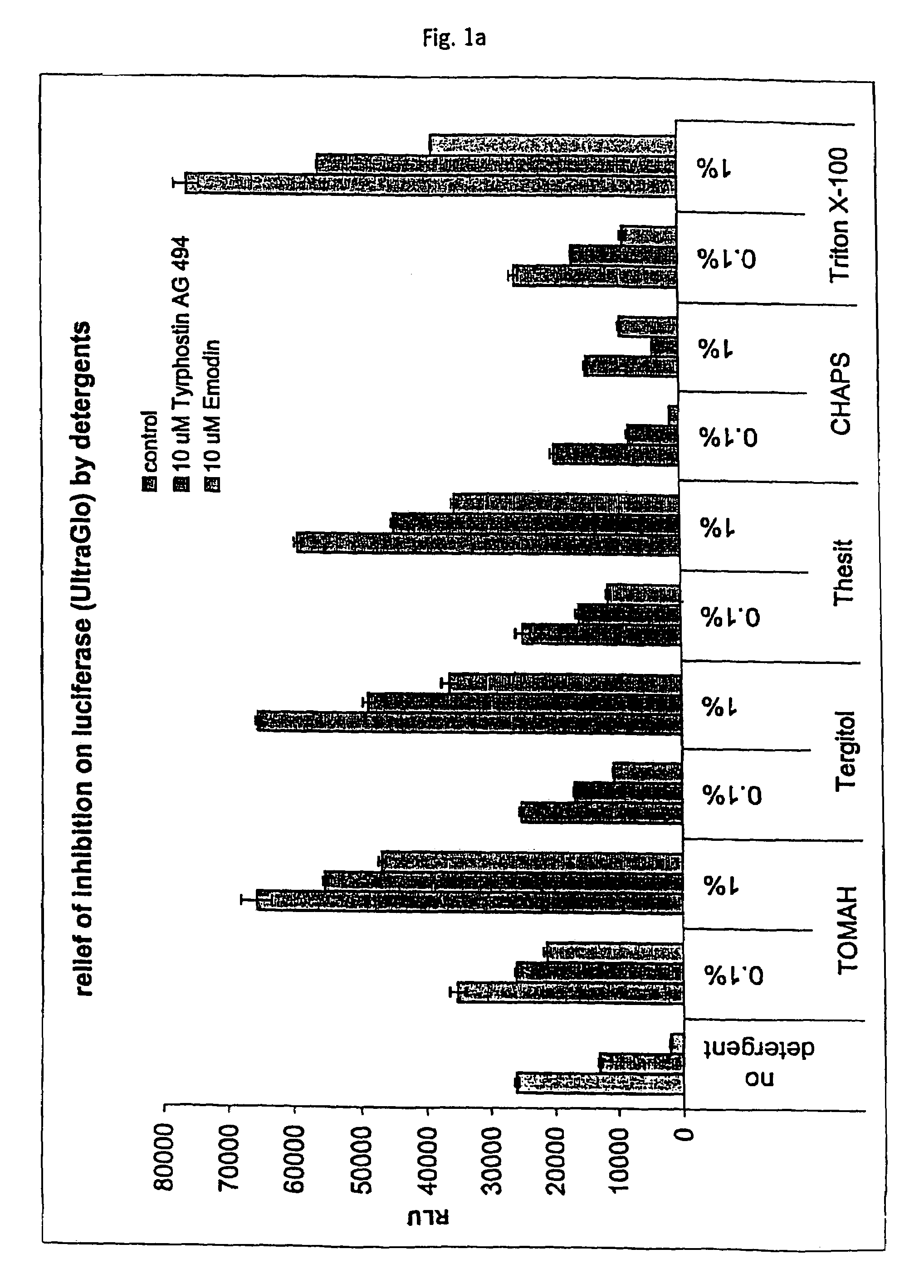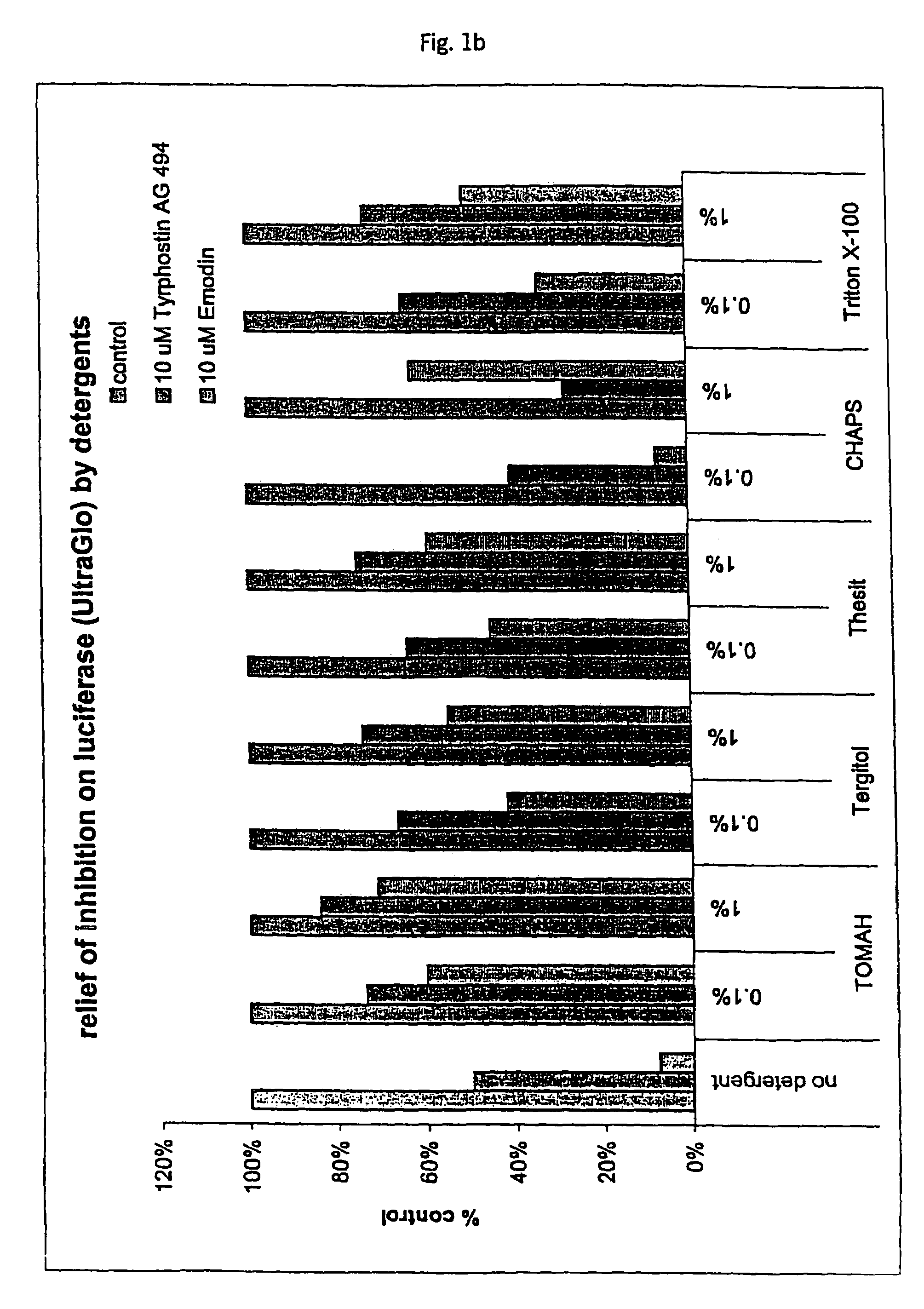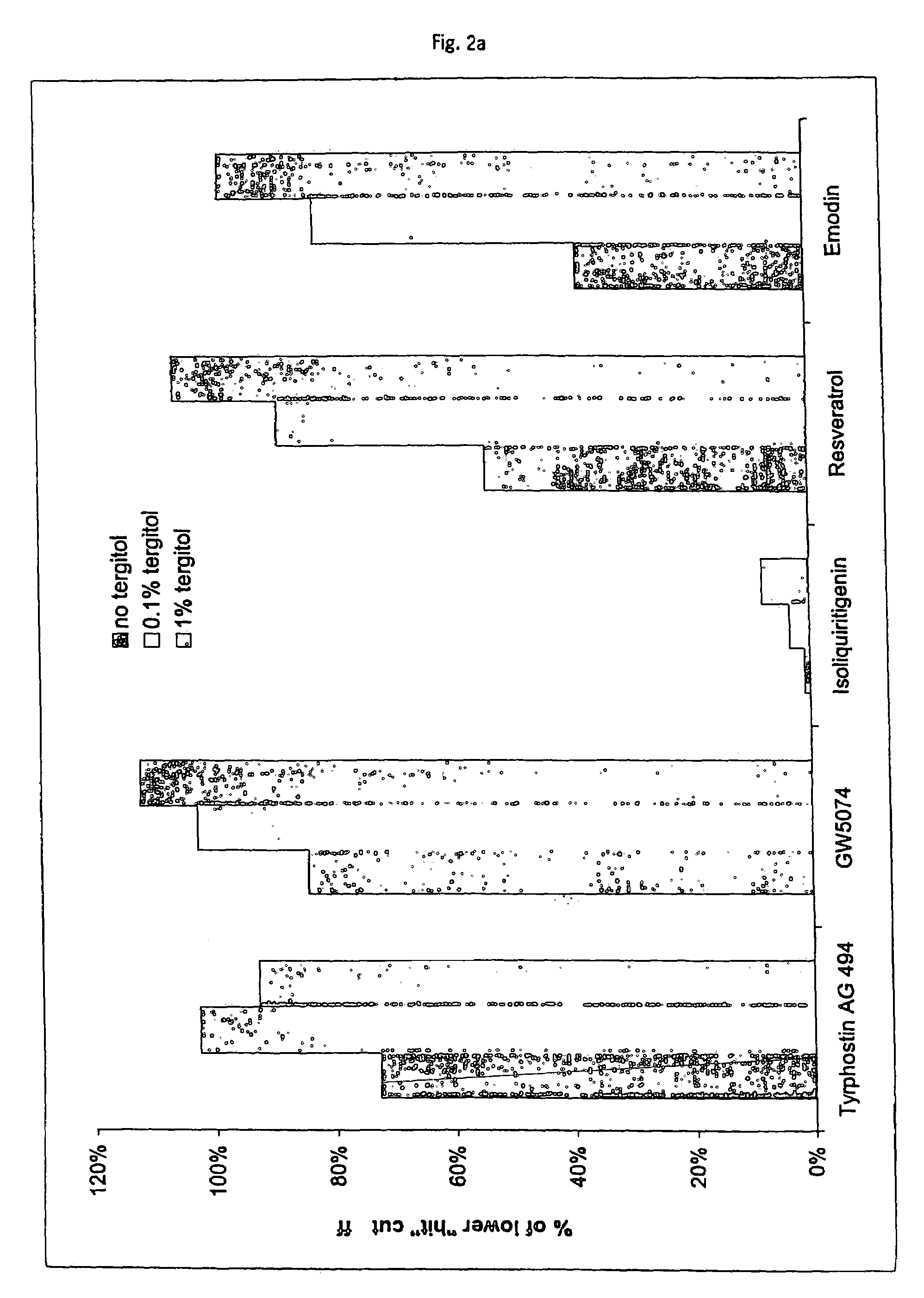Luciferase-based assays
a luciferase and assay technology, applied in the field of bioluminescence, can solve the problems of reducing luminescence and interfering with the assay, and achieve the effects of improving luciferase-based assays, high throughput, and enhancing tolerance for interference by one or mor
- Summary
- Abstract
- Description
- Claims
- Application Information
AI Technical Summary
Benefits of technology
Problems solved by technology
Method used
Image
Examples
example 1
Tolerance Enhancing Effect of Detergents on the Inhibition of Luciferase
[0164]In this Example, an assay that employs a luciferase reporter was used to evaluate whether known P450 enzyme inhibitors are also inhibitors of luciferase and whether tolerance enhancing effects of several detergents can be used to shield the luciferase against such potential inhibitors of luciferase. There is some concern that compounds under study for cellular modulation or enzyme modulation would also affect the luciferase reaction in a luciferase based cell or enzyme reporter assay system. If this were true, then one would expect to obtain an increased number of false “hits” for an assay screen for inhibitors, for instance. Two potential luciferase inhibitors, Emodin and tyrphostin AG494, were identified from the “Library of Pharmaceutically Active Compounds” (LOPAC) screen. These two compounds are potential inhibitors of certain cytochrome P450 enzymes. The objective of the current experiment was to det...
example 2
Minimization of False Hit Occurrence Using Tolerance Enhancement Agents
[0179]In this Example, screening of a commercially available library, LOPAC™ library (Library of Pharmaceutically Active Compounds, available from Sigma Corp., St. Louis, Mo. USA) was preformed to determine the effect of tolerance enhancing agents in protecting the luciferase reaction in a cell based or cell-free luciferase-based assay against potential inhibition by the drug compounds. The LOPAC™ library contains 640 compounds whose pharmaceutical activities are known. This library is commonly used to validate screening protocols that are under development.
[0180]From a LOFAC™ library screen of 640 compounds, 189 compounds were identified as inhibiting luminescence from all of three cytochrome P450 isoforms (CYP1A2. CYP1A1, CYP2C9) by ≧10% of an untreated control. It was reasoned that these might be luciferase inhibitors. If any one of the three CYP450 reactions were not apparently inhibited, then inhibition of t...
example 3
Tolerance Enhancing Effect of Detergents and Non-detergents on the Inhibition of Firefly and Renilla Luciferases
[0190]In this experiment, several tolerance enhancing agents were evaluated for their ability to protect luciferases from a known luciferase inhibitor, isoliquirtigenin (ILT) (100 μM, Sigma Chemical). ILT was added to luciferase reactions and the potential tolerance enhancing agents were evaluated for their ability to protect the luciferase from inhibition.
[0191]The basic firefly luciferase reactions contained 20 mM HEPES (Sigma Chemical) at pH 8.0, 6.4 mM Magnesium Sulfate (Fisher Scientific), 20 mM Dithiothreitol (City Chemical), 0.63 mM Coenzyme A (Pharmacia Biochemical), 0.4 mM EDTA (Sigma Chemical), 4.0 μM Luciferin (Promega Biosciences), 0.56 mM ATP (Pharmacia Biochemical), and 1.3×10−6 mg / ml firefly luciferase (QuantiLum® luciferase, Promega Corporation).
[0192]The basic Renilla luciferase reactions contained 100 mM Potassium Phosphate buffer (Sigma Chemical) at pH 7...
PUM
| Property | Measurement | Unit |
|---|---|---|
| temperature | aaaaa | aaaaa |
| pH | aaaaa | aaaaa |
| concentration | aaaaa | aaaaa |
Abstract
Description
Claims
Application Information
 Login to View More
Login to View More - R&D
- Intellectual Property
- Life Sciences
- Materials
- Tech Scout
- Unparalleled Data Quality
- Higher Quality Content
- 60% Fewer Hallucinations
Browse by: Latest US Patents, China's latest patents, Technical Efficacy Thesaurus, Application Domain, Technology Topic, Popular Technical Reports.
© 2025 PatSnap. All rights reserved.Legal|Privacy policy|Modern Slavery Act Transparency Statement|Sitemap|About US| Contact US: help@patsnap.com



